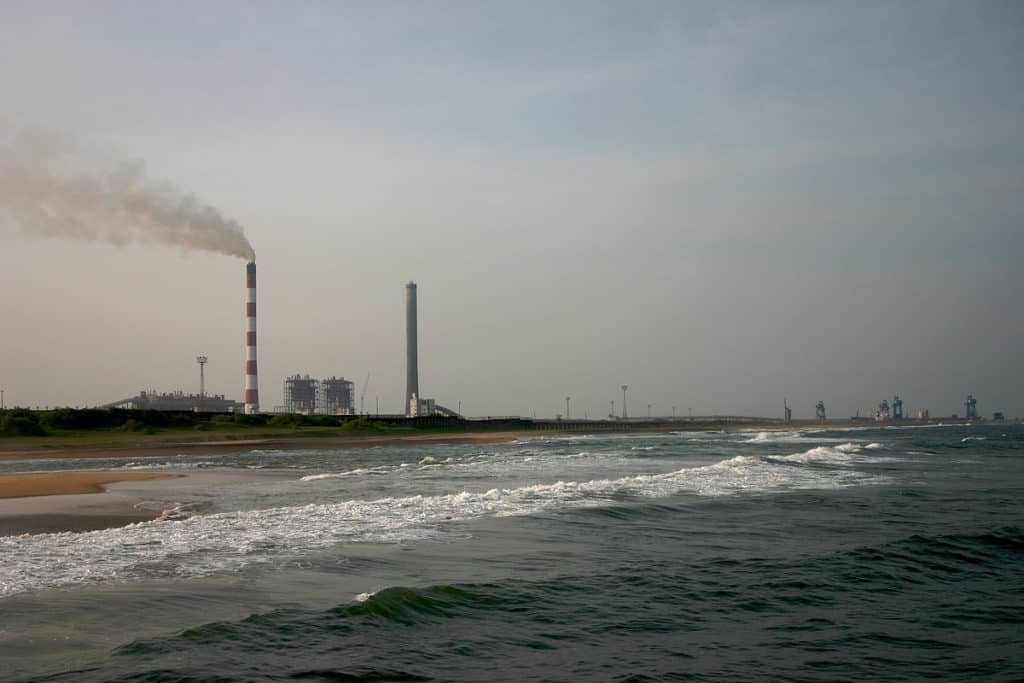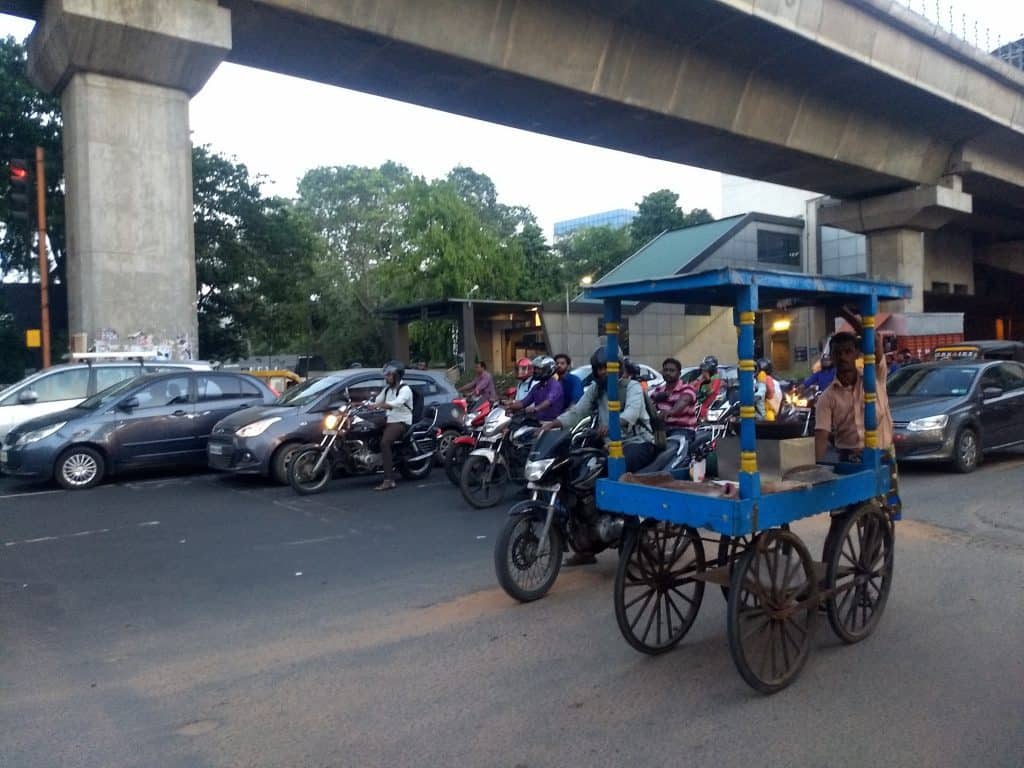Nitrogen dioxide or NO2 pollution in Chennai is back to pre-pandemic levels, shows a recent report by the non-governmental environmental organization, Greenpeace India. In fact, among all the cities studied by the researchers, Chennai recorded the second highest spike over a year as lockdown conditions were relaxed.
Greenpeace studied NO2 levels in eight Indian cities using measurements made by the Tropomi sensor on Sentinel-5P satellite. The satellite observations of April 2020 and 2021 revealed a 125% spike in NO2 levels in Delhi followed by 94% in Chennai. This not only increases the vulnerability of citizens to respiratory and circulatory issues, but also puts them at higher risk of COVID in its more severe forms.
What is NO2 pollution and why should we care?
NO2 is a primary air pollutant capable of causing serious health issues through constant exposure. Power generation, industrial and vehicular emissions are the main contributors to NO2 pollution.
Most of the particulate matter present in the atmosphere are formed by complex reactions of sulfur dioxide and nitrogen oxides, which are pollutants emitted from power plants, industries and automobiles. Factories and power plants emit NO or nitric oxide in huge amounts, which is converted or oxidised to NO2 on contact with the atmosphere.

On exposure to sunlight, NO2 can produce ozone or O3 as a secondary pollutant and is converted to PM2.5 or particulate matter 2.5 — fine, inhalable pollutant particles that are generally 2.5 micrometers or smaller in diameter. These can get deep into our lungs and even enter the bloodstream, causing serious health hazards.
The percentage of PM2.5 formed from NOx precursors usually varies from 10 to 40%, but in places near thermal power plants, NOx is the reason for 40 to 50% of PM2.5. Therefore, it is important to check NOx emissions to curb PM2.5 formation.
Read more: Ennore backwaters an “environmental crime scene” as fly ash dumping and encroachment continue
The COVID-19 factor
Health experts say prolonged exposure to NO2 can affect the respiratory and circulatory systems as well as the brain. But that is not all. Various studies conducted during the last year link air pollution with the COVID-19 caseload of respective cities. Five regions of Italy and Spain, which are known to have high concentrations of NO2, reported a huge number of COVID-19 cases. A Harvard study conducted across 3,000 counties in the US found that a small increase in long-term exposure to PM2.5 led to a large increase in the COVID-19 death rate.
The study ‘State of Global Air 2020’ shows that of the 6.7 million deaths in 2019 due to air pollution, 1.67 million occurred in India. In 2020, air pollution cost Chennai a loss of Rs 10,910 crores and 11,000 lives, as per a Greenpeace report.
“Over the years, respiratory ailments have been on the rise. One reason observed worldwide is that cases of infectious diseases have come down while allergic diseases are on the rise. The other reason is people’s growing exposure to air pollutants,” said paediatrician Dr S P Karamath. He confirmed that continued exposure to air pollutants would damage the airway and lungs, thereby acting as a major comorbidity for COVID and increasing the risk of severity of the disease.
Dr Karamath also added that air pollutants are known teratogens – agents causing abnormality following foetal exposure during pregnancy. Though they won’t directly affect the foetus but could be one of the contributing factors in causing abnormality or health issues in new-born children.
He noticed that over the years, more patients, especially young children from North Chennai were complaining of airway diseases like asthma and other allergies. “We need to safeguard children from unhealthy air. Damage to their developing lungs and airways could leave a long-term impact,” he said.
Roots of NO2 pollution in Chennai
Unabated pollution from thermal power plants in the city’s northern half is to blame for NO2 pollution in Chennai, say environmentalists. North Chennai, which includes areas like Ennore, Thiruvottiyur, Royapuram, and Manali, among others, has three thermal power plants with a capacity of up to 3300 megawatts, two seaports, and two petroleum refineries. In all, it has 38 small and medium-scale industries marked in the red category – industrial sectors having a Pollution Index score of 60 and above.
While industrial emissions contribute to NO2 pollution in North Chennai, toxic gases released by vehicles add to existing NO2 levels in the posh South and Central.
Read more: If you’re in Manali, this is why you are always coughing!
Lockdown and NO2 fluctuations
In 2019, North Chennai’s Manali monitoring station recorded bad air quality for 119 days. A study by Health Energy Initiative and Doctors for Clean Air-Tamil Nadu showed air quality at 15 locations across the city sampled between May and July 2019 was unhealthy, with levels of PM 2.5 in the worst-affected areas being nearly three times the national standard of 60 µg/m3. Though the COVID-19 led lockdown in 2020 curbed vehicular emissions to a great extent, industrial activities in Ennore region had continued in full swing.

The Greenpeace study shows that even after removing the natural effects of weather from collected satellite data, Chennai showed a spike of 55% in NO2 pollution from April 2020. The absolute levels were, however, within the recommended national daily average of 80 micrograms per cubic metre. Several studies conducted during the lockdown show similar trends in pollution, particularly NO2 levels.
Read more: “COVID lockdown shows air quality can improve in a matter of weeks”
The Central Pollution Control Board analyzed data generated from the Continuous Ambient Air Quality Monitoring (CAAQM) network in several cities in 2020. It found that PM 2.5 and SO2 concentrations in Chennai during pre-lockdown and lockdown Phase-I and Phase-II were quite lower compared to the same time in 2019. However, while the NO2 level was lesser by 64% in 2020 during the pre-lockdown phase, it rose again by 18% and 30% during lockdown phases I & II respectively, as against 2019 levels.
Lack of political will
While it is more or less universally acknowledged that emissions from thermal power plants are responsible for the scale of NO2 emissions and air pollution in Chennai, leading to poor health among North Chennai citizens, ground workers blame the laxity of both the central and state government in addressing the issue.
A May 2020 report by CSE shows coal-based power is one of the most resource-intensive and polluting industries in the country. Coal holds the maximum share of total installed power generation capacity at 56%, while renewable energy holds 23%.
In 2015, the Ministry of Environment, Forest and Climate Change, introduced compliance standards for coal-fired power plants. The power plants were required to comply with these norms that monitored sulfur dioxide, nitric oxide and mercury emissions and achieve set particulate matter (PM) standards – all by December 2017. Two thermal power plants in Chennai were found to be violating these norms during 53 percent of their total operational time in 2019 and 2020.
Worried that a huge number of power plants will go offline, the MoEFCC has now pushed the deadline to 2022 and further, depending on the location of the power plant.
Needed: Green energy, more public transport
With the change of power after the recent state elections, Prabhakaran Veeraarasu hopes the city’s air pollution problem will be dealt with more proactively. Prabhakaran is an environmental engineer and member of Poovulagin Nanbargal, an environmental organization in Tamil Nadu active for the last 32 years. He, however, stressed that there is a strong need for the decentralization of renewable energy.
“Shifting to renewable energy should be a policy drive. Instead of relying on thermal power plants, the government should look for ways to get electricity from renewable sources like solar or wind. This is both environment-friendly and cost-effective. While per unit electricity from thermal plants costs Rs 7, you pay only Rs 3.5 per unit for solar-powered electricity,” he said.
He also said there was a need to increase the number of continuous monitoring stations not only in Chennai but across the state. Tamil Nadu currently has 25 CAAQM stations, of which eight are in Chennai.
Asked about plans to boost air monitoring infrastructure in Chennai, a senior officer at the Tamil Nadu Pollution Control Board, on conditions of anonymity, said, “Based on monitoring data from existing stations, we aim to use this data modelling to identify the direction and timeframe of the pollution. By culminating in other factors, we will make one-kilometre radius grids in the city. We will imbibe monitoring stations to get the accurate data. That way, we can know the root of the problem.”
Once the department derives more detailed data, it plans to identify places with high pollution and ensure only electric vehicles ply there, to reduce NO2 emissions.
Read more: Why don’t we see electric buses on Chennai roads?
Avinash Chanchal, senior campaigner at Greenpeace suggested a transition from motor vehicles to public transport that runs on clean energy; this could cut down NO2 emissions by a great deal. Despite Chennai being India’s largest automobile hub, the rate of e-vehicle adoption here has been slow due to fewer subsidies and fewer financing options. To encourage more buyers in this segment, the Tamil Nadu government in November 2020 announced a 100% road tax waiver on EVs from November 1, 2020 till December 31, 2022.
To hold on to the clean air benefits of the lockdown, there is thus a dire need to monitor and implement green strategies throughout all critical sectors – regulating vehicles, industry, power plants, waste and even use of fossil fuels for domestic purposes such as cooking.